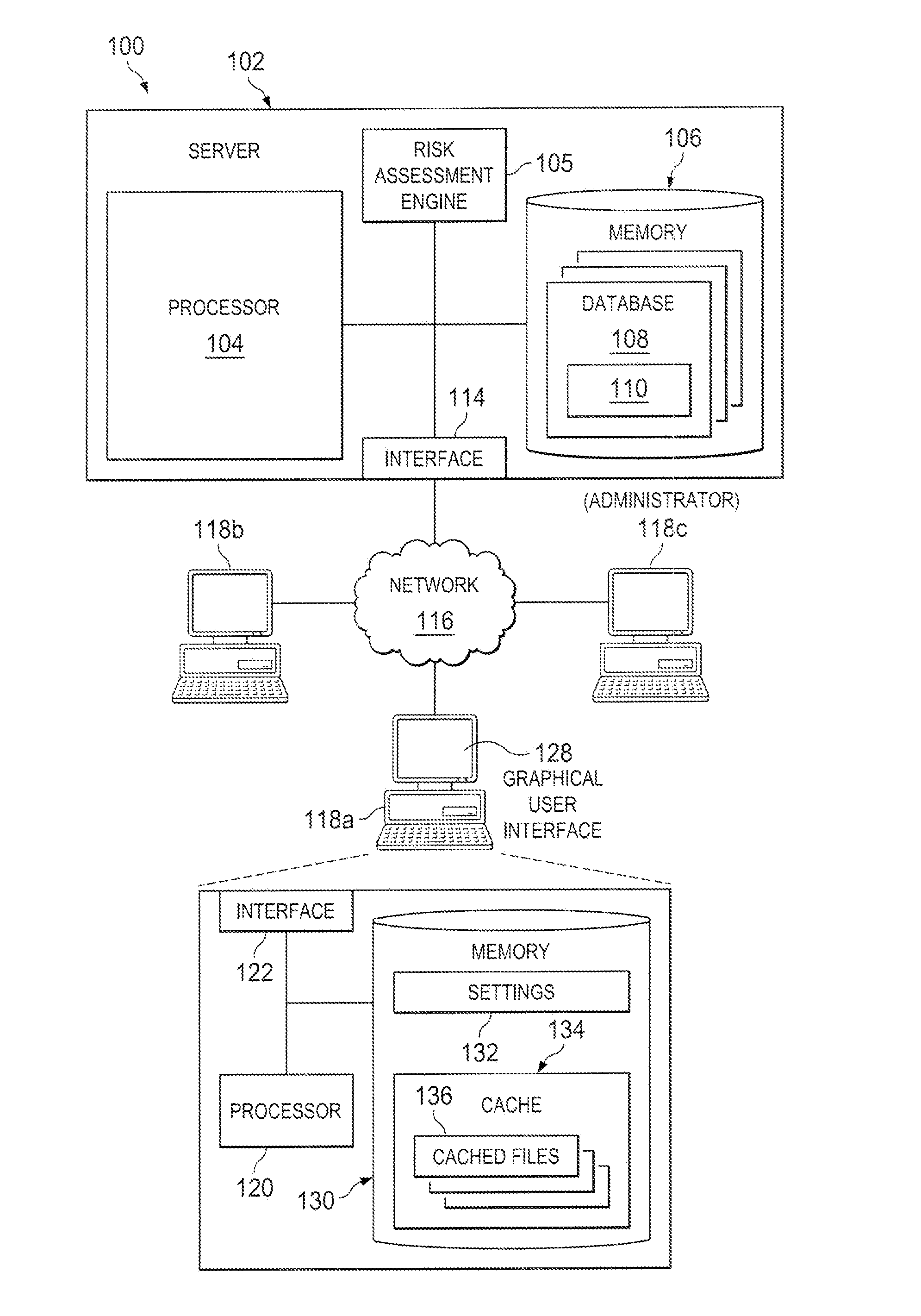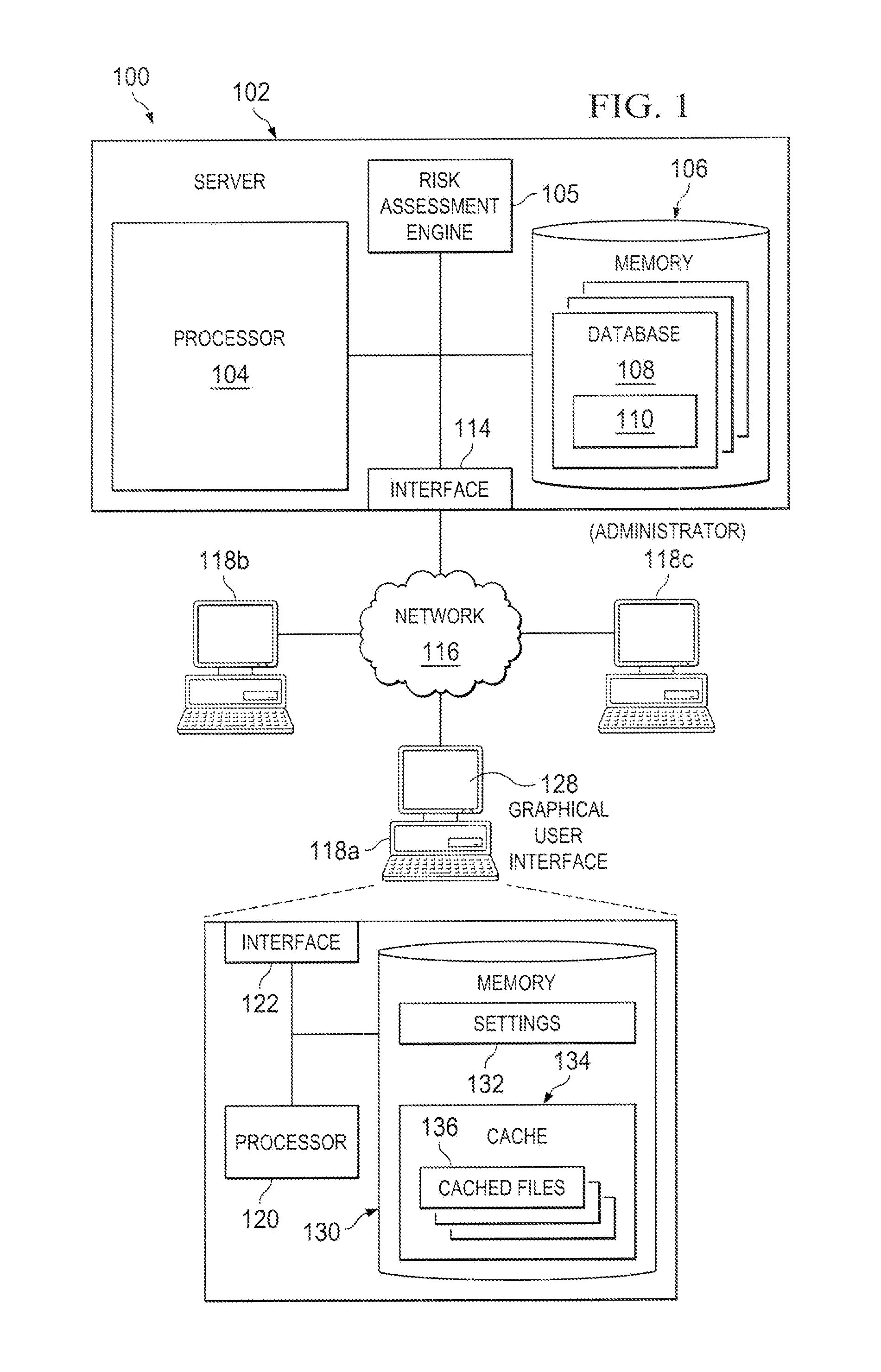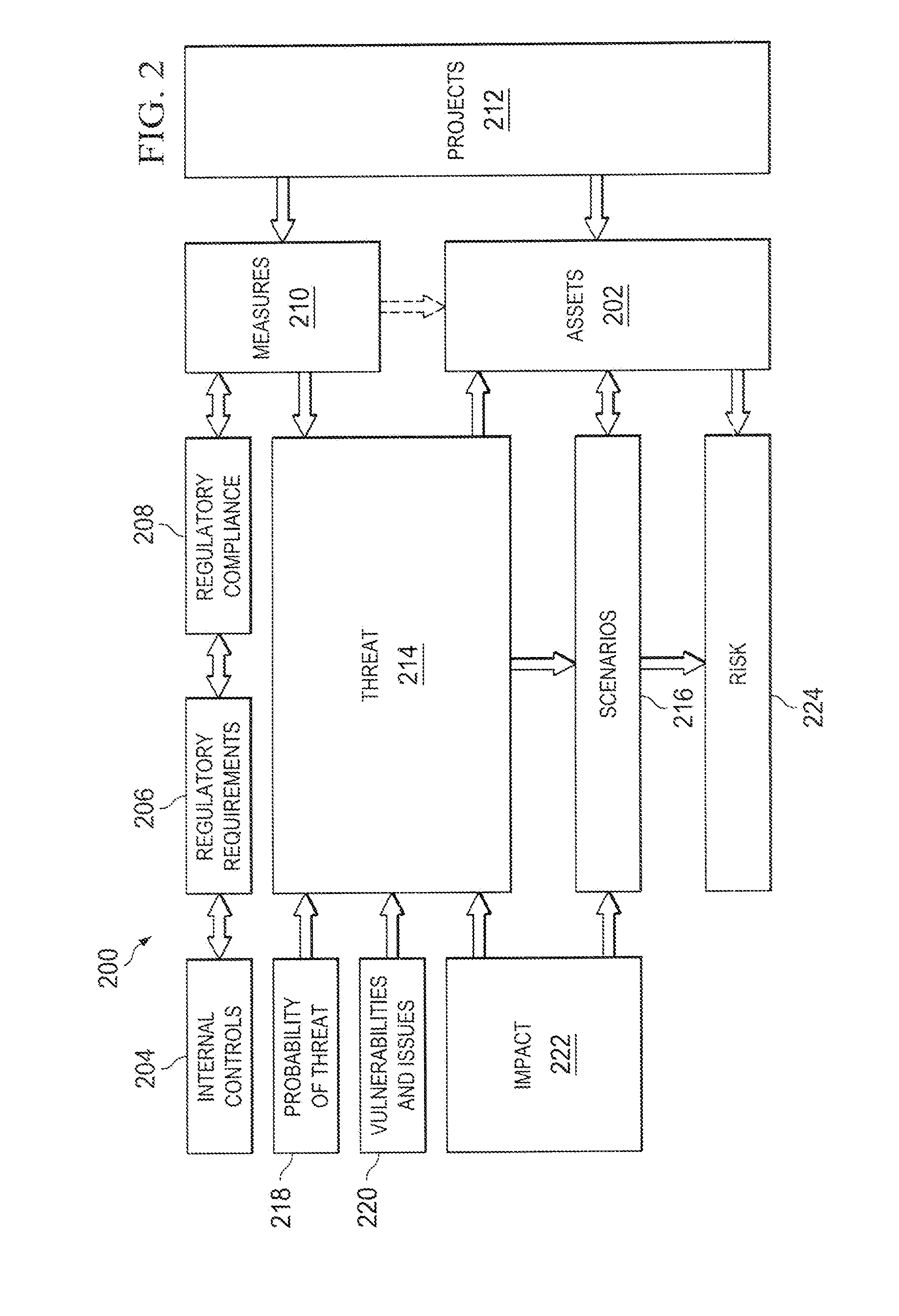Assessing scenario-based risks
a risk assessment and scenario technology, applied in the field of scenario-based risk assessment, can solve problems such as potential faults, compliance with statutory or regulatory requirements, and limit the risk assessment to a single scenario, and achieve the effects of improving the risk evaluation of a threat, high effort, and increasing the transparency of risk evaluation
- Summary
- Abstract
- Description
- Claims
- Application Information
AI Technical Summary
Benefits of technology
Problems solved by technology
Method used
Image
Examples
Embodiment Construction
[0026]This disclosure describes systems, methods, apparatus, and computer-readable media for scenario based risk assessment algorithms. In particular, embodiments include the components of risk representation (e.g., threat, assets, protection level and vulnerabilities) and consider many vulnerabilities and assets related to one threat that define several threat scenarios.
[0027]FIG. 1 is a schematic diagram of an example computing system 100, which includes or is communicably coupled with server 102 and one or more clients 118 (although only one client is illustrated in FIG. 1, a plurality of clients 118 may be included in environment 100), at least some of which communicate across network 116. In general, environment 100 depicts an example configuration of a distributed computing environment (e.g., a client-server environment). However, computing environments other than or in addition to that illustrated in FIG. 1 (e.g., stand-alone computing systems, dedicated computers or processo...
PUM
 Login to View More
Login to View More Abstract
Description
Claims
Application Information
 Login to View More
Login to View More - R&D
- Intellectual Property
- Life Sciences
- Materials
- Tech Scout
- Unparalleled Data Quality
- Higher Quality Content
- 60% Fewer Hallucinations
Browse by: Latest US Patents, China's latest patents, Technical Efficacy Thesaurus, Application Domain, Technology Topic, Popular Technical Reports.
© 2025 PatSnap. All rights reserved.Legal|Privacy policy|Modern Slavery Act Transparency Statement|Sitemap|About US| Contact US: help@patsnap.com



